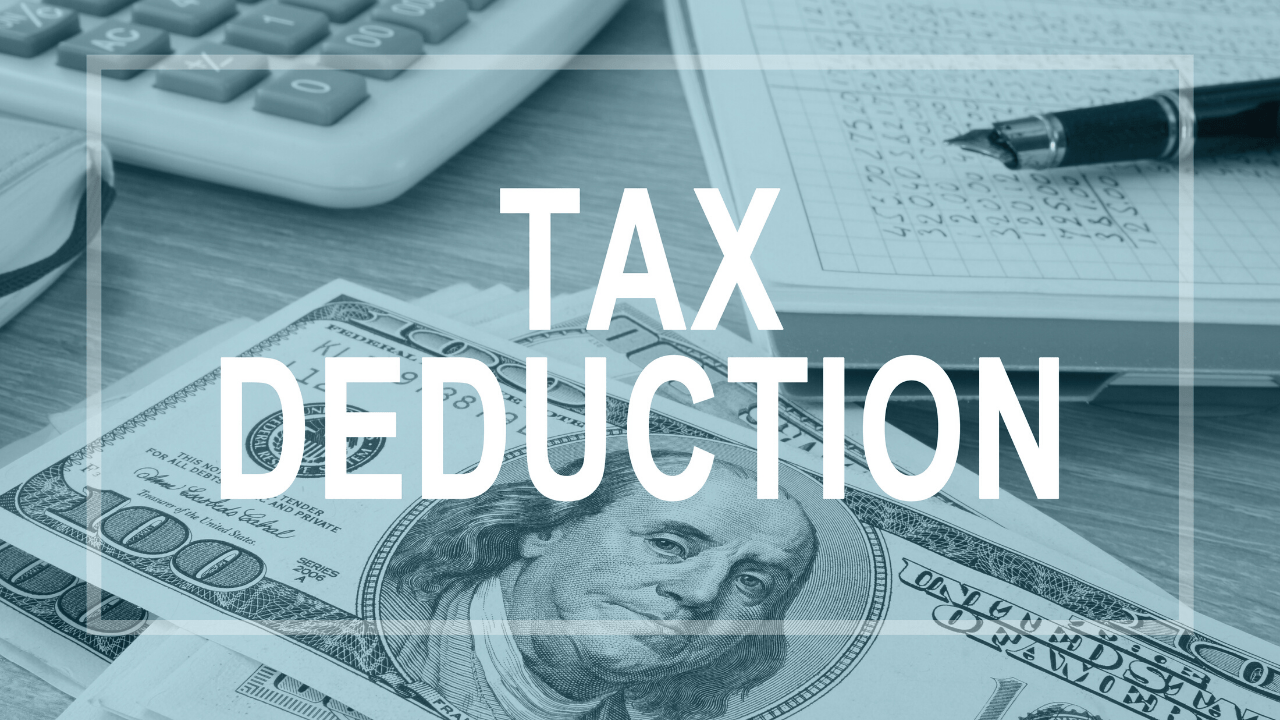There are many reasons why removing barriers and providing accommodations to people with disabilities is a good business practice: it promotes diversity, equity, and inclusion. We’re going to share one more reason- It really pays off at tax time.*
There are three tax incentives available for businesses that accommodate people with disabilities, including deaf and hard of hearing people. We’re going to explore how you can take advantage of each of these three tax incentives: Disabled Access Credit, Barrier Removal Reduction, and Work Opportunity Credit. When exploring ways to take advantage of existing tax incentives available to your business, remember, it’s important to talk to your tax accountant first.
Disabled Access Credit
The Disabled Access Credit credit is available to small businesses that incur a cost to provide access for people with disabilities. Eligible small businesses, those with less than $1 million in revenue or no more than 30 full-time employees, can claim this credit every single year, making it a popular tax incentive among businesses that provide accommodations to provide access to deaf and hard of hearing people.
The premises behind the Disabled Access Credit is straightforward: If a business incurs expenses to provide people with disabilities reasonable accommodations to improve accessibility, those expenses are eligible for a tax credit, reducing the amount owed in taxes. Fifty percent of the cost of expenses, up to $10,250 dollars, can be claimed in credit. (The first $250 is not eligible for a tax credit). Qualifying expenses include providing accommodations to customers and/or employees in order to comply with ADA. The maximum credit possible is $5,000 per year. The credit cannot be used for the costs of new construction. It can be used only for adaptations to existing facilities that are not required to comply with the ADA.
Scenario: A printing business with 25 employees spends $10,000 every year on a variety of accommodations for several Deaf customers or clients employees such as sign language interpreters, flashing doorbells, video phones, strobe light fire alarms, and captioning training materials in order to comply with ADA and improve accessibility. The business fills out Tax Form 8826 and receives fifty percent credit in the amount of $4,875 (50% of $10,000 less the first $250). They now owe $4,875 less in taxes. Anything over $10,250 will result in a maximum credit of $5,000.
Barrier Removal Deduction
Barrier Removal Deduction is another popular tax incentive. Unlike a tax credit, the Barrier Removal Deduction tax incentive allows businesses of any size to reduce a business’s taxable income. Like the Disabled Access credit, it can be claimed annually.
Qualifying expenses must address architecture or transportation specific access needs by removing structural barriers to access. New construction does not qualify for this deduction, however. Some examples include: adding a ramp where one did not exist, widening existing doorways, and installing a wheelchair accessible single-stall bathroom next to a previously inaccessible bathroom. For businesses that serve Deaf customers, this may mean changing the physical layout of a business to increase visibility or installing glass doors for all employee offices so deaf and hard of hearing customers and employees can communicate with one another by signing through glass. Up to $15,000 in qualified expenses can be deducted each year under this tax deduction.
Scenario 1: A restaurant which hired a few deaf and hard of hearing employees needs to ensure open sightlines exist in a fast-paced environment. Right now the kitchen is closed off to the rest of the restaurant, impeding access to critical communication between staff in the kitchen and those in the front of the house serving customers. The cost to tear down a full wall and install a half wall is $2,000. The amount of revenue subjected to taxes is now reduced by $2,000.
Scenario 2: An older apartment building is retrofitting its building and incorporating elements of Universal Design as a way to make their facility more accommodating to people with disabilities. They have removed high counters in their lobby so individuals in wheelchairs can see the receptionist. In their community spaces, they installed glass doors, removed unnecessary visual barriers such as columns and installed more lightning. The result? Spaces that are open and bright, with improved sightlines for Deaf and hard of hearing people who use sign language to communicate. Additionally, they replaced all carpet with flooring of varying textures and patterns on each floor to help Blind and low vision individuals distinguish between the different areas of the building. If such costs of retrofitting were to be $20,000, a maximum reduction of revenue would be $15,000
Work Opportunity Credit
Unlike the Disabled Access Credit, which is only available to small businesses, this tax incentive places no restriction on the number of employees or revenue a business earns in order to be eligible. It works like this, if a business hires a WOTC-certified person from certain targeted groups who have faced significant employment barriers, they may be able to claim this tax credit up to $9,600 per WOTC-certified employee. Some Deaf and hard of hearing employees will qualify, particularly if they are referred by a Vocational Rehabilitation agency, are SSI recipients, receive public assistance, or were previously unemployed for a long period of time.
To take advantage of this, a simple two-step process is followed. IRS Form 8850 must be completed by the employer within 28 days of the employee starting in order to become WOTC-certified. Once certification status is obtained, this credit can be claimed as a general business credit. As a second step, the business will need to fill out IRS Form 5884 in order to claim this credit at tax time. It is important to note the Work Opportunity Credit is set to expire in December 2020. It is also suggested you check with your State employment offices as they may have registration requirements, as well.
Scenario: A previously vacant position has been filled by a Deaf person who was referred by Vocational Rehabilitation services. Knowing this, the employer immediately filled out the IRS form 8850 in order to ensure their employee received WOTC-certification. Once certification status was granted, the business was able to claim this tax credit. Seeing the advantages of this, the business worked closely with Vocational Rehabilitation in their state to increase the number of referrals for future vacant positions and as a result, increased their tax credits even more.
When exploring ways to take advantage of existing tax incentives available to businesses who provide accommodations to people with disabilities or invest in structural changes to make their business ADA compliant, it is important to talk to your tax accountant first. They can best advise you which tax incentive makes the most sense for your business to claim and which expenses will qualify, especially since tax laws are subject to change every year.
Key Takeaways
Providing access for deaf and hard of hearing people benefits your business in many ways. One advantage of accomodating people with disabilities can be found in three tax incentives above which can reduce the amount of taxes a business owes. Smart businesses know how to leverage these advantages when working with deaf and hard of hearing people. Now that’s deaf-friendly!
*The deadline for tax returns in 2020 was extended to July 15, 2020.





